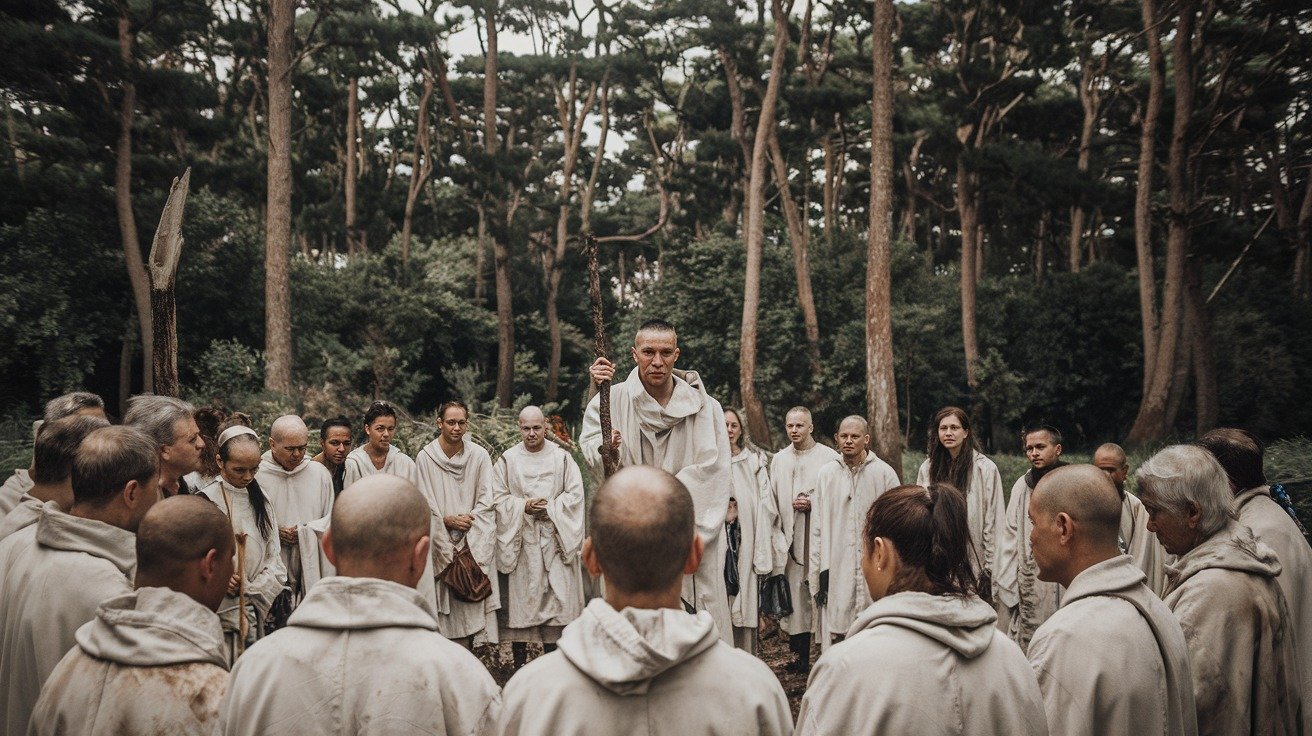Introduction: Why Do People Join Human Gathering Cults?
Have you ever wondered why people are drawn to tightly-knit groups that seem to live by their own unique rules and rituals? The term human gathering cult may evoke images of secretive meetings, charismatic leaders, and followers with unwavering devotion. But there’s much more to these groups than meets the eye.
In this blog post, we’ll explore the fascinating world of human gathering cults—what they are, why they exist, and what draws people to them. We’ll uncover their structure, psychological appeal, and societal impact. By the end, you’ll understand the reasons behind their allure and how they shape human behavior. Let’s dive into this intriguing phenomenon.
What Defines a Human Gathering Cult?
A human gathering cult can be broadly defined as a group of people united by a shared set of beliefs, practices, or goals, often centered around a charismatic leader or a specific ideology. Unlike mainstream religious or social groups, cults tend to exist on the fringes of society and often have unconventional or controversial practices.
What sets them apart? Cults are often secretive and operate with a high level of control over their members. They create a close-knit environment where loyalty to the group becomes paramount. Whether it’s a spiritual movement, a doomsday prophecy, or a lifestyle philosophy, the unifying belief system becomes the central focus of members’ lives.
The Psychological Appeal of Human Gathering Cults
Why do people join cults?
At first glance, it may seem irrational to join a group that demands extreme devotion or sacrifices personal freedoms. However, the answer often lies in psychology. Cults meet deep human needs for belonging, purpose, and identity.
- The Need for Community
Humans are inherently social beings. In a world where isolation is becoming more common, a human gathering cult offers a sense of community and connection. Members often describe feeling like they’ve found a family—people who truly understand and accept them. - A Clear Sense of Purpose
In a chaotic and unpredictable world, cults provide a clear vision of what life is about. Whether it’s preparing for an apocalyptic event or achieving spiritual enlightenment, members find meaning and direction that is often missing from their daily lives. - Charismatic Leadership
Many cults revolve around a central leader who exudes confidence, charm, and vision. These leaders are skilled at persuasion and can make their followers believe they hold the key to truth or salvation. Their charisma can be magnetic, drawing in people who feel lost or uncertain.
How Do Human Gathering Cults Operate?
Cults are often highly organized, with structures that maintain control and cohesion. While each cult is unique, certain patterns tend to emerge:
1. Recruitment Techniques
Recruitment is often subtle. Members might be invited to an event, seminar, or workshop that seems harmless or even beneficial. Over time, they’re gradually introduced to the group’s deeper beliefs and practices.
2. Isolation from Society
Once someone becomes a member, cults often encourage cutting ties with the outside world. This isolation reinforces loyalty to the group and prevents conflicting perspectives from influencing members.
3. Strict Rules and Rituals
Rules and rituals are a defining feature of many cults. These might include daily practices, dress codes, or dietary restrictions that strengthen the group’s identity and reinforce a sense of exclusivity.
The Thin Line Between Cults and Religions
One of the most debated aspects of cults is their similarity to religions. After all, many mainstream religions began as small, unconventional groups. So what separates a human gathering cult from a legitimate religion?
The distinction often lies in societal perception and longevity. Religions typically have established doctrines, large followings, and societal acceptance. Cults, on the other hand, are often newer, smaller, and seen as deviant or extreme.
However, history shows that some cults evolve into widely accepted religions over time. For example, Christianity began as a small, persecuted group but grew into one of the world’s largest religions.
The Dark Side of Human Gathering Cults
While some cults are benign and focused on positive goals, others have caused harm to their members and society.
1. Exploitation
Cults can exploit members emotionally, financially, or even physically. Followers may be pressured to donate large sums of money, work for free, or sever ties with loved ones.
2. Psychological Manipulation
Cults often use techniques like fear, guilt, and peer pressure to maintain control. Members may be made to feel that leaving the group would result in dire consequences.
3. Dangerous Practices
Some cults have engaged in activities that put their members or the public at risk. High-profile examples include mass suicides, illegal activities, and violent confrontations with authorities.
Why Are Cults Still Relevant Today?
In an age of information and skepticism, you might think cults would struggle to survive. Yet, they continue to thrive. Why?
1. The Internet
The internet has made it easier for like-minded individuals to connect, regardless of location. Online communities can act as incubators for modern-day cults, providing a platform to recruit and indoctrinate members.
2. Modern Stressors
The fast pace of modern life, economic struggles, and global crises create fertile ground for cults to offer solutions. People seeking stability and answers are more likely to be drawn to these groups.
3. Universal Human Needs
At their core, cults tap into universal human needs for connection, meaning, and understanding. As long as these needs exist, so will cults.
Lessons We Can Learn from Human Gathering Cults
While the term “cult” often carries negative connotations, there are lessons we can draw from their existence:
- The Importance of Community
Cults remind us of the power of belonging. Healthy communities can fulfill this need without the risks associated with cults. - The Need for Critical Thinking
Understanding how cults operate can help us recognize manipulation and make informed decisions. - The Search for Meaning
Cults highlight humanity’s deep desire for purpose. By cultivating personal meaning in our lives, we can resist the allure of extreme ideologies.
How to Protect Yourself and Others
If you or someone you know is at risk of joining a human gathering cult, here are some tips:
- Educate Yourself: Learn to recognize the signs of cult behavior.
- Stay Connected: Maintain strong relationships with family and friends outside of the group.
- Ask Questions: Don’t accept beliefs or practices without questioning their validity.
- Seek Help: If needed, consult professionals who specialize in cult intervention and recovery.
Conclusion: The Enduring Mystery of Human Gathering Cults
The world of human gathering cults is as fascinating as it is complex. From their psychological appeal to their societal impact, these groups continue to captivate our attention. While some bring community and purpose, others can lead to exploitation and harm.
By understanding what drives people to join cults, we can better navigate our own lives and help others who may be vulnerable. Whether you’re curious or concerned, one thing is clear: the story of human gathering cults is far from over.








